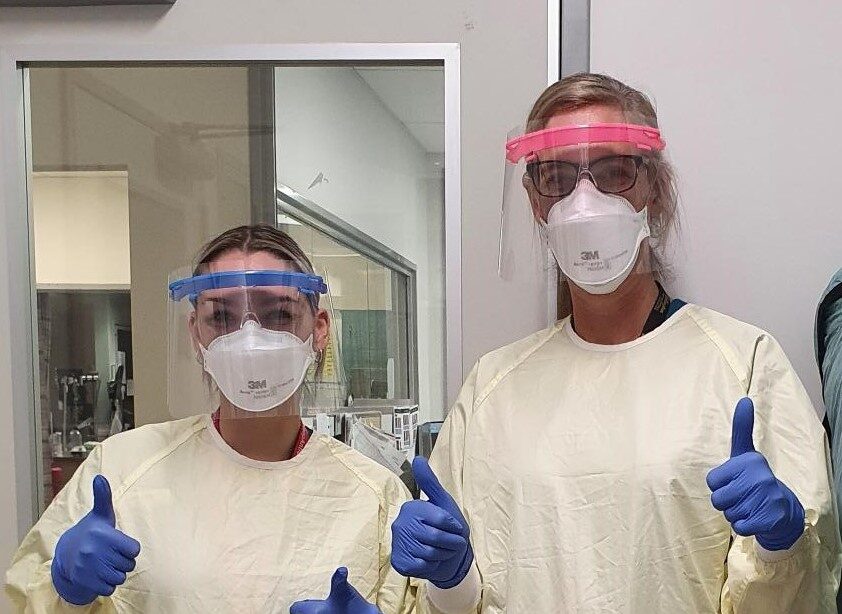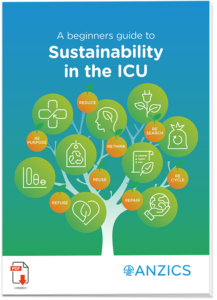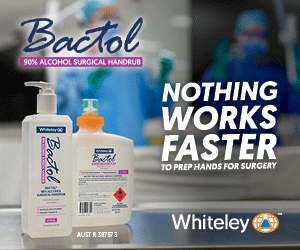
Mitchell — one of six critical care specialists from the Australian and New Zealand Intensive Care Society (ANZICS) who contributed to the guidelines — said they could be applied throughout hospitals, not just intensive care units (ICUs).
‘If it’s something quite important to you and you see there is real danger, you do do it — you find the time, and find a way to make it happen.’
“I think that’s a real draw card that nurses will get out of it, by having a read and seeing there are lots of things that would be applicable to their own environment, rather than just intensive care.”
While critical care nurses were among the busiest, climate change was significant, well-documented and impacted on people’s health, said Mitchell. “If it’s something quite important to you and you see there is real danger, you do do it — you find the time, and find a way to make it happen,” she said. “Sometimes it seems too big and too hard, but actually small changes can make a difference.”
Recycling
Encouraging recycling bins in the staffroom, segregating food waste and using second-hand cutlery or crockery were some simple ways to reduce waste. “No-one comes to work and expects to have matching china sets!”
Even reducing unnecessary paper waste and printing could help, as well as ensuring that sharps bins- – more expensive to dispose of with higher impact on the environment — were only used for sharps, she said.
‘Sometimes it seems too big and too hard, but actually small changes can make a difference.’
Nurses, in particular, were well-placed to make sure hospital resources were being used appropriately, not unnecessarily, eg during goals-of-care discussions with patients with limited life expectancy and their whānau, Mitchell said. Such discussions around treatment limitation or withdrawal could also improve the quality of dying and reduce stress, as per the ANZCIS statement on care at end of life.
Nurses could also play a key role in reducing waste, much of it around reducing what was new, Mitchell says. “Do I need this complex dressing on a wound or will a simple dressing suffice?” Or in an isolation room, when everything is thrown out on patient discharge, only prepare it with what is needed. “So, if you take out things [from the room] you don’t need first, it reduces what needs to be thrown away”.
Procurement ‘really important’.
But with only five per cent of hospital carbon emissions relating to waste, a sustainable supply chain and procurement was also very important, she said. For example, at Wellington Hospital ICU, when looking at calf compressors to prevent deep vein thrombosis, “we are going with a company where the device that goes around someone’s calf can be recycled and resused, which is excellent for reducing waste”, she said.
“That puts pressure on the company making things for health care — we can challenge them on their sustainable practices and their reduction of waste, even if it’s packaging,” she said. “You open things and there’s a plastic bag inside a plastic bag, and everything’s inside a box. There’s a lot of unnecessary packaging and waste.”
ICUs throughout New Zealand and Australia were already making changes, many driven by staff who contributed to the guidelines, which contained many examples. “We’re pooling our knowledge of the things that we do and sharing our knowledge with other people.”
Mitchell said many staff had an interest in sustainability and wanted their actions to reflect their personal values. “People who are passionate about it will make the small decisions, and every single decision to change things and make sure sustainability matters, no matter how small, is important.”
Guidelines ‘relatable’ across the health system
In her own ICU unit in Wellington, Mitchell said nurses working in isolation noticed the large amount of waste from the use of personal protective equipment (PPE), particularly single-use gowns which could be used more than 20 times a day per patient.
They asked the ICU COVID committee to source an alternative, washable gown which can be re-used 100 times and tracked each time they’re laundered.
Wellington ICU also has a communal “keep cup” shelf in the tearoom for staff and a “repurpose shelf” for charitable donations of items such as batteries, toys, books.
Mitchell said the guidelines were “relatable to any part of the health system”, with advice on reducing waste in the staffroom as well as clinical environments.
See also Health reforms fail to deliver on climate change, say NZNO & other health professionals

A beginners guide to sustainability in the ICU –– suggestions:
- Set up recycling and introduce second-hand cutlery and crockery to reduce takeaway containers or encourage staff to BYO cups and containers.
- Rubbish and food waste recycling, eg if any staff make compost, or have worm farms or pigs to feed.
- Vegetarian catering and promotion of a more plant-based diet.
Patient care:
- Replace single use drug trays or containers with reusable varieties.
- When patients move around the hospital, they can take items like oxygen masks, nasal prongs and tubing with them.
Sustainable procurement:
- Choose reusable over single-use items where possible, and preferably biodegradable ones.
- Consider reprocessing single-use devices through sterile cleaning services such as Medsalv.
- Use product stewardship programmes to ensure manufacturers minimise waste.
- Consider rehoming equipment in a developing country through organisations such as Take My Hands or Medical Aid Abroad.





